Sherborne School
Sherborne School is an English independent boarding school for boys, located beside Sherborne Abbey, in the parish of Sherborne, Dorset. The school has remained in the same location for over 1,300 years. It was founded in 705 AD by St Aldhelm and, following the dissolution of the monasteries, re-founded in 1550 by King Edward VI, making it one of the oldest schools in the United Kingdom. Sherborne is one of the twelve founding member public schools of the Headmasters' and Headmistresses' Conference in 1869 and is a member of the Eton Group.
| Sherborne School | |
|---|---|
 | |
| Address | |
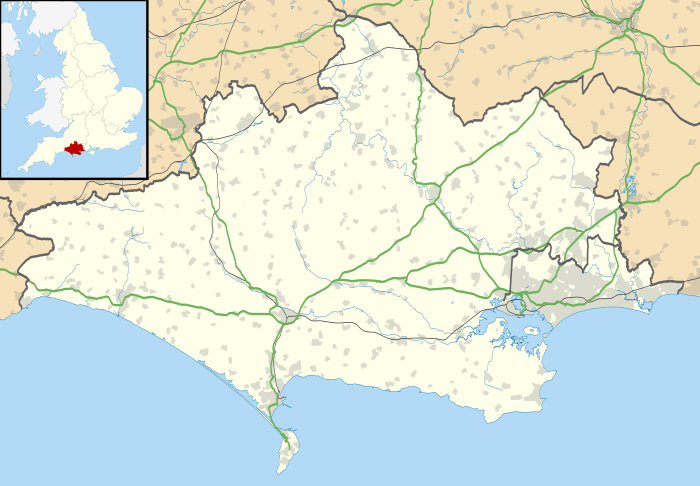 Sherborne School 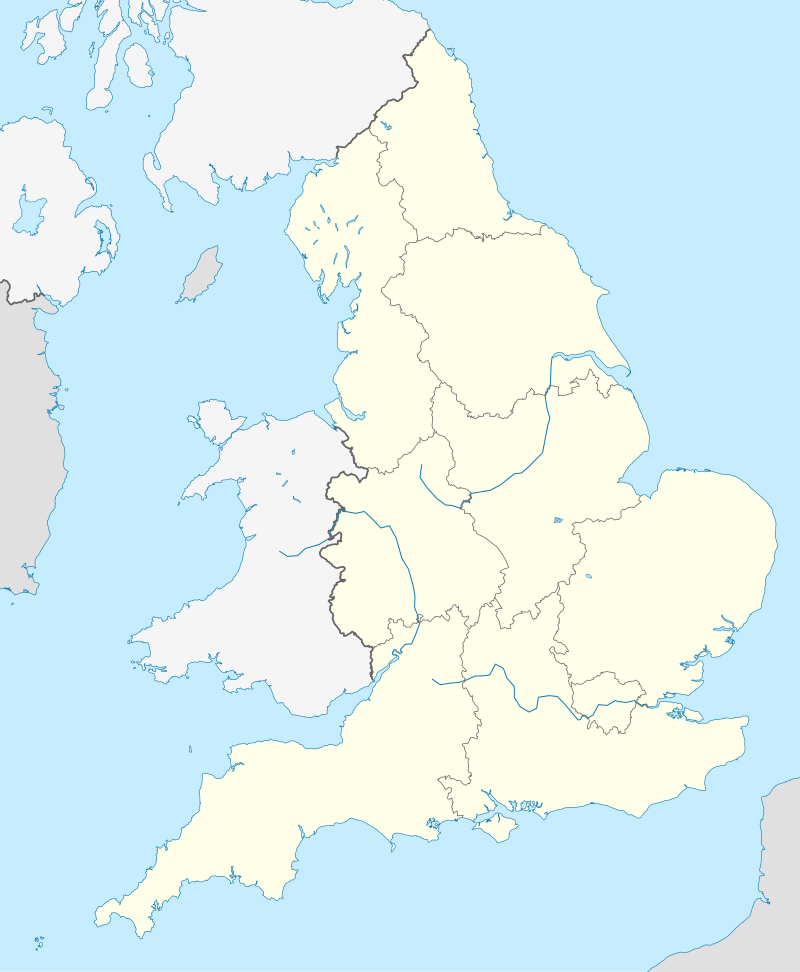 Sherborne School 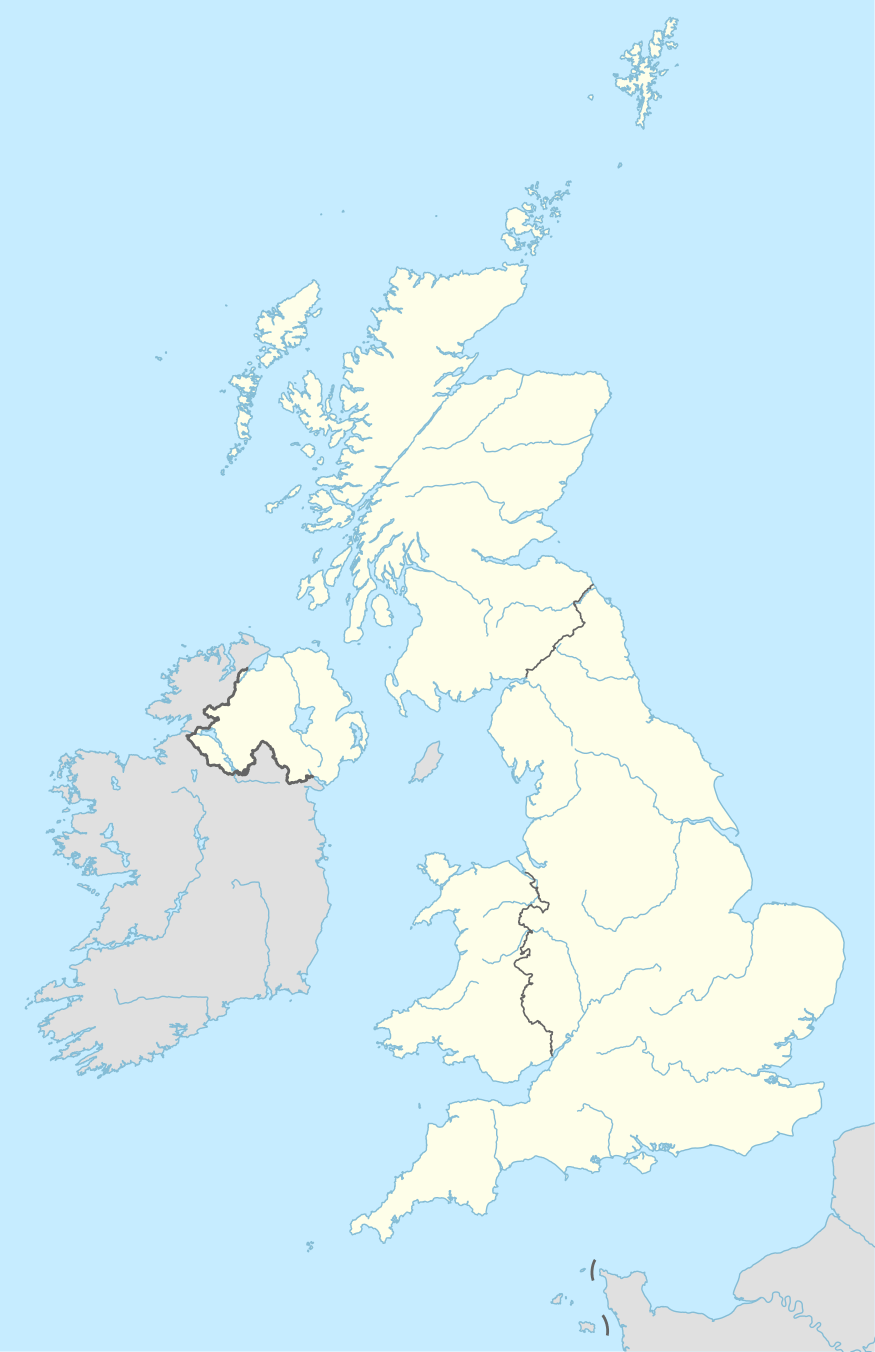 Sherborne School | |
Abbey Road , , DT9 3AP | |
| Coordinates | 50.9478°N 2.5145°W |
| Information | |
| Type | Public school Independent, boarding school |
| Motto | French: Dieu et Mon Droit (God and My Right)[1] |
| Religious affiliation(s) | Church of England |
| Established | 705 by Aldhelm, re-founded by King Edward VI 1550 |
| Founder | St Aldhelm |
| Department for Education URN | 113918 Tables |
| Chairman of the Governors | Roger Fidgen[2] |
| Headmaster | Dr Dominic Luckett[3] |
| Chaplain | Rev Dr David Campbell |
| Staff | 165 |
| Gender | Boys |
| Age | 13 to 18ƒ |
| Enrolment | 560 pupils as of 2019 |
| Houses | 8 (9 from 2021) |
| Colour(s) | Blue & gold (hamstone)
|
| Song | Carmen Shirburniense |
| Publication | The Shirburnian |
| Former pupils | Old Shirburnians |
| Website | http://www.sherborne.org |



In the public school tradition, Sherborne remains a full boarding school with boys living seven days a week in one of nine boarding houses. Sherborne is one of only five such remaining single-sex boys' boarding independent senior schools in the United Kingdom (the others being Eton, Harrow, Radley, and Winchester)[4], although uniquely Sherborne also admits a few day boys. Sherborne educates about 560 boys, aged 13 to 18, and its A level results placed it in the top 1% of all schools in England in 2016 and 2017.[5]
Sherborne has a partnership with the neighbouring Sherborne Girls school. While both are single-sex full boarding schools, a programme of shared academic, co-curricular and social activities enables Sherborne boys and girls to mix and work together at a crucial developmental stage. [6]
It has been said that nowhere else in England is the connection of the present with the past more pleasingly marked than at Sherborne School.[7]
History
705 to 1539
Sherborne was founded as a cathedral school when in 705 AD King Ine of Wessex instructed Aldhelm, the foremost churchman and most distinguished scholar of his day, to found a cathedral and college of clergy at Sherborne to relieve pressure from the growing see of Winchester.[8] It is one of the oldest schools in the United Kingdom.[9]
Anglo-Saxon masonry survives in the Beckett Room, below the School Library, a reminder that Sherborne continues to occupy part of the Saxon Cathedral to which it owes its foundation.
Alfred the Great, King of the Anglo Saxons, is held to have been an early pupil of the school, a tradition supported by the seat of West Saxon government having moved to Sherborne in 860 (after Winchester was sacked by the Danes) when Alfred was about 11 years old. That Alfred's son, later Bishop of Sherborne, was also educated at a cathedral school (in Winchester following its recovery by Wessex) is regarded as additional presumptive evidence in support of the claim.
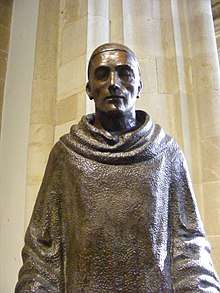 Sherborne was founded as a cathedral school by St Aldhelm in 705
Sherborne was founded as a cathedral school by St Aldhelm in 705 The school was re-founded by King Edward VI in 1550
The school was re-founded by King Edward VI in 1550 The School Room and Headmaster's House by Nathaniel Whittock (1791-1860)
The School Room and Headmaster's House by Nathaniel Whittock (1791-1860) The arms of King Edward VI above a school doorway
The arms of King Edward VI above a school doorway Sherborne School in 1861 (Illustrated London News)
Sherborne School in 1861 (Illustrated London News)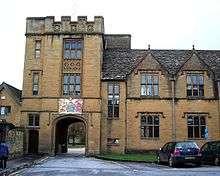 The main entrance to Sherborne School
The main entrance to Sherborne School
Aldhelm was the first Bishop of Sherborne, and the school remained under the direction of Sherborne's bishops until 1122 when its supervision passed to the abbot of the Benedictine monastery which had been established at Sherborne by Wulfsige III in 998. The School continued under monastic direction until the dissolution of the monasteries by King Henry VIII in 1539.
The school continues to occupy the site of the former monastery; the School Chapel (12th century, modified in the 15th, 19th, and 20th centuries), the School Library (13th century, modified in the 15th century), and the Abbot's House, occupied by the headmaster and the senior staff (13th century, modified in the 15th century), are all former monastic buildings. The outlines of the monastic cloister, and curious first floor Abbot’s Chapel, are visible on the walls beyond the Abbot's House.[10]
1539 to 1550
While the dissolution of the Benedictine Monastery of Sherborne in 1539 had an impact on administration and finances, Sherborne School remained in continuous operation, as evidenced by extant documents including the Abbey churchwardens' accounts for 1542, which record a rent received from the school, and conclusively from a note on the certificate for Dorset under the Chantries Act, dated 14 January 1548, which records the school at Sherborne as continuatur quousque [long continued].[9]
1550 to date
On 29 March 1550 a formal instruction was issued by King Edward VI to re-found Sherborne School together with a good endowment of lands that the school might ever endure. A beautifully engrossed Royal Charter was sealed on 13 May 1550, under which the school was to have a headmaster and usher for the education of boys, and a board of twenty governors under a warden. A further note of continuity was struck when the last headmaster of Sherborne under the old foundation, William Gibson, was appointed as the first headmaster under the new foundation.
When Edward VI re-founded Sherborne, he granted the school an endowment of valuable lands which belonged to abolished Chantries in the churches of Martock, Gillingham, Lytchett Matravers, Ilminster and the Free Chapel of Thornton in the parish of Marnhull.[10] The lands with which the Chantries were endowed are predominantly in Dorset, specifically in the manors of:
Sherborne International
Established in 1977, Sherborne International is an independent co-educational boarding school, owned and governed by Sherborne School, for those from non-British educational backgrounds who wish to improve their English language skills before moving on to study at boarding schools elsewhere in the United Kingdom. It is located in Sherborne, occupying its own campus, Newell Grange, while sharing some facilities with Sherborne School.[11]
Sherborne Qatar
In 2009 Sherborne founded Sherborne Qatar Prep School in Doha, Qatar, followed by Sherborne Qatar Senior School in 2012.[12]
School fees cartel
In 2005, 50 of the country's leading independent schools, including Sherborne, were found guilty of running an illegal price-fixing cartel, which had allowed them to drive up tuition fees.[13] Each school was required to pay a nominal penalty of £10,000. All schools involved in the scandal agreed to make ex-gratia payments totalling £3 million into a trust. The trust was designed to benefit pupils who attended the schools during the period in respect of which fee information was shared.[14] However, Jean Scott, the head of the Independent Schools Council, said that independent schools had always been exempt from anti-cartel rules applied to business, and were following a long-established procedure in sharing information with each other, and were unaware of the change to the law (on which they had not been consulted). She wrote to John Vickers, the OFT director-general, saying, "They are not a group of businessmen meeting behind closed doors to fix the price of their products to the disadvantage of the consumer. They are schools that have quite openly continued to follow a long-established practice because they were unaware that the law had changed."[15] [[File:Sherborne school cloisters.jpg|260px|thumb|upright=0.9|Sherborne School undercroft.
Best Head of a Public School
In September 2019 the Headmaster of Sherborne, Dr Dominic Luckett, was named as the Tatler Best Head of a Public School 2020.[16]
School terms
There are three academic terms[17] in the Sherborne year,
- The Michaelmas Term, from early September to mid December. New boys are admitted at the start of the Michaelmas Term.
- The Lent Term, from mid-January to late March.
- The Trinity Term, from late April to late June.
Houses

Sherborne is a full boarding school for boys with boarding houses operating on the house system. In addition to a House Master, each house has a Matron, Assistant Matron, Senior Tutor and one or more Resident Tutors. Each house has around 70 boys from across all year groups.
There are nine boarding houses:
| House | Distinctive
letter |
Date
founded |
House Colours | ||
|---|---|---|---|---|---|
| School House | a | 1860 | Magenta and Black | ||
| Abbey House | b | 1868 | Purple and Black | ||
| The Green | c | 1865 | Yellow and Black | ||
| Harper House | d | 1873 | Light Blue and Black | ||
| Wallace House | e | 1931 | Red and Blue | ||
| Abbeylands | f | 1872 | Red and Black | ||
| Lyon House | g | 1912 | Dark Blue and Black | ||
| Westcott House | h | 1920 | White and Black | ||
| The Digby | m | 1964 | Green and Black | ||
While Abbey House is the second oldest school boarding house in continuous use, part of the building was first used as a boarding house from 1835 to 1849 making it technically the oldest Sherborne School house.[18]
Westcott House was closed to pupils in 1999 for use as part of Sherborne International. It will be reopened as a Sherborne boys' boarding house in September 2021.[19]
Sherborne houses are separated into in and out houses, with in houses situated near to the school, and out houses spread out around the town.
Former boarding houses
| House | Letter | Dates | House Colours | ||
|---|---|---|---|---|---|
| Mapperty House | g | 1885-1890 | White and Black | ||
| Ramsam House | - | 1868-1890 | Blue and Black | ||
Chapel

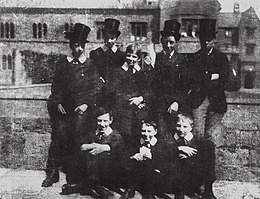
The school chapel was originally the Monastic Hall (built in the 15th century over the 12th century undercroft) used by the Abbot of Sherborne Abbey and was acquired by the school in 1851 from Edward, Earl Digby.[20] It was restored and extended, and in 1855, consecrated as a chapel, dedicated to St John the Evangelist. It has been extended several times: eastwards in 1853; westwards in 1865; northwards, to create the North aisle, in 1878 and; westwards and northwards in 1922 to extend the nave, and create the antechapel which has the names engraved of those who died in the Great War and World War II.
There are two organs in the chapel: one is a 24-stop Neo-Baroque pipe organ by S.F. Blank;[21] the other is a virtual organ by Hauptwerk with the specification of the Hereford Cathedral organ.[22]
Library


The library was the Abbot's Guesten Hall (13th century, modified 15th century) and would have looked over the Garth and Conduit before the latter was moved to the town's market place in 1560.The building was later a silk mill and later still, perhaps, a brewery. It was acquired by the school in 1851 and restored in 1853. The Upper Library was used as the main school assembly room up until 1879 (when the Big Schoolroom was built) and has been used as the main school library since. The Lower Library was the Cellarer's store room and outer parlour. Later it was used as three classrooms, then the headmaster's office, but since 1926 it has been used as the Lower Library. In the 1980s the library expanded into the 12th century undercroft below the chapel. From 1670-1861, the school library was situated in the current School House Oak Room (built 1607), before being moved to its current location.
Music
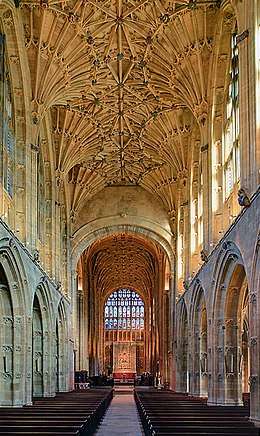
Music is a Sherborne tradition. Many boys achieve grade 8 distinctions for voice and a range of instruments. Several boys each year also pass their ATCL diplomas, many with distinction. Some then go on to take their LTCL diplomas.[23] The Week Good Schools Guide named Sherborne as The Best Independent School in the Country for Music in 2015.[24]
In 2010 Sherborne built a new music school with highly specialist recital and recording space. Designed by Richard Keating of Orms, the building won numerous architectural awards including the 2012 RIBA South West Region Award, BCSE Award 2012 and RIBA South West Excellence In Architecture Award 2012.[25]
The school has two choirs, two close harmony groups, a symphony orchestra, sinfonia, chamber orchestra, concert and radio orchestras (Trinity term only), wind band, wind quintet, string, wind, brass and jazz ensembles and various other smaller instrumental ensembles.[26]
Performance spaces include the Tindall Recital Hall, the Big Schoolroom, and the Powell Theatre.
There are two Abbey services a week which are accompanied by the chapel choir, with the chamber choir singing an introit on Sundays. Once a term the chamber choir sings for a service in an external venue. These include: Salisbury Cathedral, Winchester Cathedral and various Oxford College chapels, amongst numerous others, as well as these, international tours are available for various ensembles.
The Sherborne School Choral Society was founded in 1871 by J R Sterndale-Bennett, the then director of music. Nowadays it consists of the Sherborne School choirs, Girls' school Choir, and members of public from the local area. It performs annually and concert venues have included Sherborne Abbey, Wells Cathedral, and Poole Lighthouse.
The school song is Carmen Saeculare, also known as Carmen Shirburniense, and features a rousing last line in each verse of Vivat Rex Eduardus Sextus or Long Live King Edward the Sixth to commemorate the School’s Royal foundation in 1550. The words were written by Edward Mallet Young in 1887, and set to music by Louis Napoleon Parker. It is sung by the entire school, including the staff, although only the first and last verses are sung nowadays.[27]
Sherborne holds its own rock festival in the heart of its historic grounds, aptly named "Concert in the Courts", featuring Shirburnians and boys and girls from local senior schools, performing and spectating. The festival began in the mid 1990s and the proceeds from it are donated to charity.[28]
Sport
Grounds
Sherborne has over 60 acres of sports grounds, all within walking distance from the school.


The school's cricket ground – the Upper – is usually used by the 1st XI cricket team. The ground was first used in 1870, when Sherborne School played Clifton College.[29] The ground is also one of the venues used by Dorset for their home fixtures. Dorset played their first match on the ground in the 1902 Minor Counties Championship against Devon. From 1902 to 1997, the ground played host to 69 Minor Counties Championship matches, with the final Championship match involving Dorset coming in 1997 when they played Herefordshire.[30] In addition, the ground has hosted 13 MCCA Knockout Trophy matches, the last of which was in 2008, when Dorset played Buckinghamshire.[31]
The ground has also played host to a single List A match, when Dorset played Bedfordshire in the 1968 Gillette Cup.[32]
On 30 May 2010, Dorset played Somerset, which included international players such as Craig Kieswetter in a friendly Twenty20 fixture on the ground. On 27 May 2011, the Upper hosted Dorset against Gloucestershire.[33]
Rugby
Rugby has been played at Sherborne since 1846. Sherborne was the third school to take up the sport after Rugby itself and Cheltenham, and it competes in an invitational tournament, the Veterrimi IV, involving the four oldest rugby-playing schools. The school has played over 100 matches against local rivals Downside, and the Pilgrims (Old Shirburnians) played their 100th match against Radley in 2015.[34] Robert Hands, a former sports journalist for The Times, has written a history of rugby at Sherborne School.[35]
School magazine
The Shirburnian is the official School magazine, first published in March 1859. It was devised as ‘an outlet for its [the School’s] wit, and also an easy means of printing all its News, both as regards those of us who are here and those who have left.’ The initial run was short-lived, but it was resurrected in May 1864 and has been published continuously almost every term since that year, becoming an annual publication from 1997.
Films
Sherborne School's buildings and grounds have been used in several films including:
- The Guinea Pig (1948)
- The Browning Version (1951)
- Goodbye Mr Chips (1969)
- A Murder of Quality (1991)
- The Browning Version (1994)
- The Imitation Game (2014)
- Wolf Hall (BBC TV Series 2015)
- Far From the Madding Crowd (2015)
Headmasters
Headmasters of Sherborne from 1437 to the present time
- 1437– Thomas Copeland
- 1549– William Gibson MA
- 1553– Thomas Coke MA, Fellow of The Queen's College, Oxford
- 1560–1561 Francis Myddelton MA, Fellow of Magdalen College, Oxford
- 1561–1561 Thomas Parvys MA, Christ Church, Oxford
- 1563–1565 William Wolverton MA, Fellow of Merton College, Oxford
- 1565–1565 John Delabere MA BMed DMed, Christ Church, Oxford
- 1565–1573 John Hancock MA, Fellow of Merton College, Oxford
- 1575–1581 Rev Thomas Seward MA, Fellow of Brasenose College, Oxford
- 1581–1601 William Wood MA, Brasenose College, Oxford
- 1601–1603 Rev John Geare MA, The Queen's College, Oxford
- 1603–1639 George Grove MA, Pembroke College, Cambridge
- 1639–1641 Richard Newman MA, Fellow of Merton College, Oxford
- 1641–1653 Ralph Balch MA, Merton College, Oxford
- 1653–1663 Rev William Birstall MA, Fellow of King's College, Cambridge
- 1663–1670 Rev Joseph Allen MA, Fellow of New College, Oxford
- 1670–1683 Joseph Goodenough MA MB, The Queen's College, Oxford
- 1683–1694 Rev Thomas Curgenven MA, Exeter College, Oxford
- 1694-1696 Thomas Creech MA, Fellow of All Souls, Oxford[36]
- 1695–1720 Rev George Gerard MA, Fellow of Wadham College, Oxford
- 1720–1733 Rev Benjamin Wilding MA, Balliol College, Oxford
- 1733–1743 Rev John Gaylard MA, Fellow of Emmanuel College, Cambridge
- 1743–1751 Rev Thomas Paget MA, Christ Church, Oxford
- 1751–1766 Rev Joseph Hill MA, Christ Church, Oxford
- 1766–1790 Rev Nathaniel Bristed MA, Emmanuel College, Cambridge
- 1790–1823 Rev John Cutler MA, Exeter College, Oxford
- 1823–1845 Rev Ralph Lyon DD, Fellow of Jesus College, Cambridge
- 1845–1850 Charles Penrose, MA, Trinity College, Cambridge
- 1850–1877 Daniel Harper, MA, Fellow of Jesus College, Oxford
- 1877–1892 Rev Edward Mallet Young MA, Fellow of Trinity College, Cambridge
- 1892–1909 Rev Frederick Brooke Westcott MA, Fellow of Trinity College, Cambridge
- 1909 Charles Henry Thursfield Wood MA, Christ Church, Oxford
- 1909–1927 Charles Nowell Smith MA, Fellow of Magdalen College, Oxford and New College, Oxford
- 1928–1933 Charles Lovell Fletcher Boughey MA, Trinity College, Cambridge
- 1934–1950 Alexander Wallace, MA
- 1950–1970 Robert William Powell MA
- 1970–1974 David Emms MA, Brasenose College, Oxford
- 1974–1988 Robin Donnelly Macnaghten MA, King's College, Cambridge
- 1988–2000 Peter Herbert Lapping MA, Oxon
- 2000–2010 Simon Flowerdew Eliot MA, Queens' College, Cambridge
- 2010–2014 Christopher Davis MA, Corpus Christi, Cambridge
- 2014–2015 Ralph Barlow BSc (interim Headmaster)[37]
- 2016– Dr Dominic Luckett BA DPhil, Magdalen College, Oxford[38]
Ushers
The Usher, or Lower Master, was appointed by the Governors of Sherborne independent of the Headmaster. The qualifications required were similar to those for a Headmaster, although he was usually a younger man who might reasonably expect to obtain a headmastership elsewhere in time. He was required to have attained at least a BA from Oxford or Cambridge, and he may have been in Holy Orders.[9]
The Usher was responsible for teaching the lower three forms and had responsibilities over the boys similar to the modern position of a House Tutor. From the fragment of an Account Roll, still extant, dating from 1549, there is evidence that there was an Usher before the Re-founding of Sherborne in 1550, but unfortunately the name is not given.[39] The office was abolished in 1871,[40] although the title was later briefly revived to denote the Senior Deputy Head.[41]
OS = Old Shirburnians
- 1560 Henry Bagwell BA, St Mary's College, Oxford
- 1561 John Martin BA, Fellow of University College, Oxford
- 1563 Thomas Penye BA
- 1565 Rev George Holman BA
- 1569 Nicholas Buckler BA, St Alban's Hall, Oxford
- 1570 Rev Hammet Hyde BA, Brasenose College, Oxford
- 1572 Rev Walter Bloboll BA
- 1573 John Elford BA
- 1574–1581 No name given
- 1581 [first name not given] Wornell
- 1581 Philip Morris BA, Lincoln College, Oxford
- 1584 Rev Lawrence Fuller BA, Magdalen College, Oxford
- 1589 John Rooke MA
- 1595 William More MA, Gloucester Hall, Oxford
- 1605 George Gardiner BA, St Mary's Hall, Oxford
- 1611 Rev George Harrison BA, Exeter College, Oxford
- 1625 Rev Randell Calcott BA, Magdalen College, Oxford
- 1629 Rev Richard Camplin BA, St Mary's Hall, Oxford
- 1629 John Jacob BA, Merton College, Oxford
- 1635 John Mitchell BA, Balliol College, Oxford
- 1638 Rev [first name not given] Proctor
- 1638 Rev John Fyler BA, Balliol College, Oxford
- 1647 Thomas Martin BA, Pembroke College, Oxford
- 1664 Jonathan Grey BA
- 1667 John Walker MA, Magdalen College, Oxford
- 1667 Rev William Plowman MA, Magdalen College, Oxford OS
- 1675 Rev Peter Blanchard BA, Magdalen College, Oxford
- 1682 Abraham Forrester BA, Christ Church, Oxford
- 1695 Robert Forrester BA, Trinity College, Oxford OS
- 1695 Rev John Butt MA, Trinity College, Oxford OS
- 1718 Rev Edward Cosins BA, The Queen's College, Oxford
- 1723 Rev John Gaylard MA, Fellow of Emmanuel College, Cambridge
- 1728 James Martin BA, Merton College, Oxford
- 1737 James Thomas MA, Christ Church, Oxford
- 1760 Rev William Sharpe MA, University Church, Oxford
- 1766 Rev John Bristed MA, Clare College, Cambridge
- 1779 Robert Pargiter BA, Magdalen College, Oxford
- 1780 William Glasspoole MA, New College, Oxford
- 1800 James Knight Moore MA, Trinity College, Cambridge
- 1801 Rev William Hoblyn Lake MA, Fellow of Wadham College, Oxford
- 1804 Henry Cutler BA, Exeter College, Oxford
- 1805 Rev David Williams BA, Oriel College, Oxford
- 1813 Rev Thomas James MA, St John's College, Cambridge
- 1860-1871 Arthur Mapletoft Curteis MA, Fellow of Trinity College, Oxford
- 2016-17 Ralph Barlow BSc[41]
Old Shirburnians
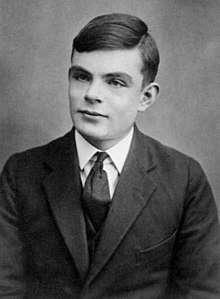
_(cropped).jpg)

.jpg)
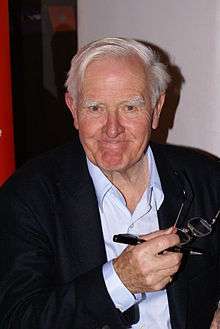
Former pupils of Sherborne School are known as Old Shirburnians or OS.
Old Shirburnians born in the 8th to 17th centuries
Old Shirburnians born in the 18th century
Old Shirburnians born in the 19th century
Old Shirburnians born in the 20th century
What follows is a selection of more recent notable Old Shirburnians:
- Academia
Notable Old Shirburnians in academia include mathematician, cryptanalyst and father of Artificial Intelligence and the first modern computer Alan Turing, Headmaster of Eton College, Master of Corpus Christi College, Cambridge and Vice-Chancellor of Cambridge University Michael McCrum, Master of Balliol College and Vice-Chancellor of Oxford University Sir Colin Lucas, Vice-Chancellor of Durham University and Master of Magdalene College, Cambridge Sir Derman Christopherson, literary scholar Sir Malcolm Pasley Bt, historian The Right Honourable The Lord Thomas of Swynnerton, mathematician and philosopher Alfred North Whitehead, chemist, Curator of the Museum of the History of Science, Oxford and Director of the Science Museum Sherwood Taylor, Provost of Worcester College, and Vice-Chancellor of the University of Oxford Francis John Lys, historian and aster of Peterhouse College, Cambridge Harold Temperley, neurologist John Newsom-Davis, prehistorian and archeologist Richard Atkinson, Professor of European Studies at Oxford University and author Timothy Garton Ash.
- The Armed Forces
Notable Old Shirburnians in the military include Commander in Chief Naval Home Command Admiral Sir Horace Law, Deputy Supreme Allied Commander Europe Admiral Sir James Perowne, Field Marshal Sir Claud Jacob, commander of 6th Airlanding Brigade during the Rhine Crossing Brigadier Hugh Bellamy, World War One flying ace Captain Keith Muspratt, Battle of Britain flying ace Flight Lieutenant Carl Raymond Davis, Commander in Chief India, Governor of Gibraltar General Sir Charles Monro, Bt, Master-General of the Ordnance General Sir Jeremy Blacker, Commander in Chief Land Command General Sir John Wilsey, Commander in Chief Land Command and Deputy Commander of the International Security Assistance Force in Afghanistan General Sir Nicholas Parker, developer of machine gun tactics and Conservative MP Lieutenant Colonel Reginald Applin, CEO of Aegis Defence Services Lieutenant Colonel Timothy Spicer, Director General of the European Union Military Staff in the Council of the European Union, Gentleman Usher of the Black Rod Lieutenant General David Leakey, Commandant General Royal Marines Lieutenant General Sir Martin Garrod, Commandant General Royal Marines Lieutenant General Sir Steuart Pringle, Bt, Commander of Royal Marines in the Falklands War Major General Julian Thompson, overall British Commander in the Gulf War Major General Patrick Cordingley, Major-General Commanding the Household Division and General Officer Commanding London District, Major General Sir Iain Mackay-Dick, Commander of British Forces in Hong Kong Major General Sir Roy Redgrave, and Deputy Commander Operation Inherent Resolve Major General Rupert Jones.
- Diplomatic Service
Notable Old Shirburnians in diplomacy include Sir Alan Campbell, UK High Commissioner to Australia Sir Brian Barder, British High Commissioner in Malaya Sir Donald MacGillivray, colonial administrator Sir Hugh Norman-Walker, UK Permanent Representative to the United Nations Sir John Weston, UK Ambassador to Turkey and Lieutenant Governor of the Isle of Man Sir Timothy Daunt, ambassador to Thailand, Austria and Brazil Sir Geoffrey Arnold Wallinger, diplomat, philanthropist and explorer Hugh Carless, and Governor-General of New Zealand The Right Honourable Charles Bathurst, 1st Viscount Bledisloe.
- Entertainment and Arts
Notable Old Shirburnian actors, musicians and directors include Jeremy Irons, Hugh Bonneville, James Purefoy, John Le Mesurier, Charles Collingwood, film, theatre, television and opera director Sir Richard Charles Hastings Eyre, film director Sir Gerald Grove Bt, Jon Pertwee, Charlie Cox, Lance Percival, lead singer of rock band Coldplay Chris Martin and creative director and manager of Coldplay Philip Harvey.
- Intelligence Service
Notable Old Shirburnians in intelligence include two former Heads of the Secret Intelligence Service (MI6), Sir Christopher Curwen, and Sir David Spedding.
- The Law
Notable Old Shirburnians in the law include High Court Judge Sir Antony James Cobham Edwards-Stuart, Senator of the College of Justice and Principal Commercial Judge in the Court of Session in Scotland The Right Honourable Lord Glennie, high court judge in colonial India and prolific author Charles Augustus Kincaid, Solicitor General for Scotland and Lord Advocate William Milligan, Lord Milligan, and solicitor and author Sir Dermot Turing Bt.
- Media
Old Shirburnians in the media include TV journalist and ITV News Political Editor Tom Bradby, TV journalist and Sky News Defence Correspondent Alistair Bunkall, journalist Nigel Dempster, TV journalist and BBC News news presenter Simon McCoy, BBC producer and creator of panel games including Just a Minute, Many a Slip. and Twenty Questions Ian Messiter, journalist and film critic for The New Yorker magazine Anthony Lane, and TV, radio and print journalist, and BBC News Central Europe Correspondent Nick Thorpe.
- Politics
Notable Old Shirburnians in politics include Alan Lennox-Boyd, 1st Viscount Boyd of Merton, Charles Beauclerk, Earl of Burford, Education Minister Sir Christopher Chataway, Michael Marsham, 7th Earl of Romney, William Cecil, 2nd Earl of Salisbury, The Right Honourable The Lord Thomas of Swynnerton, Thomas Buchanan, Robert Key, The Right Honourable The Lord Tyler, Liberal Party politician John Pardoe, Conservative Party politician Denzil Kingston Freeth, Liberal Party politician Sir Cecil Algernon Cochrane, writer, farmer and father of Boris Johnson Stanley Johnson, Liberal Democrat politician Andrew Duff, and journalist, author and political commentator Peter Oborne.
- Writers
Old Shirburnians who have been writers and poets include, novelist Alec Waugh elder brother of Evelyn Waugh, their father author, literary critic, and publisher Arthur Waugh, Poet Laureate Cecil Day-Lewis, novelist David Cornwell (a.k.a. John le Carré), John Cowper Powys, Jon Stock, literary scholar Sir Malcolm Pasley Bt, Robert McCrum, Tim Heald, novelist Roger Norman, journalist, historian and biographer Brian Moynahan, and Warren Chetham-Strode.
- Overseas
Old Shirburnians who have come from overseas include Emir of Qatar His Highness Sheikh Tamim bin Hamad Al Thani (Sherborne International College), king of Swaziland King Mswati III (Sherborne International College), and Regent and Crown Prince of Pahang, Malaysia Tengku Hassanal Ibrahim.
Victoria Cross holders
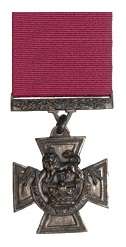
Five Old Shirburnians have been awarded the Victoria Cross, to whom a memorial plaque was commissioned, the unveiling of which took place in the School Chapel on 19 September 2004.[42]
- Rear Admiral Henry James Raby VC CB.
VC won in the Crimean War, when he was a Lieutenant in the Naval Brigade. Raby was the first man to actually receive the medal, with Queen Victoria pinning it onto him in the first investiture. - Brigadier General Sir Arthur George Hammond VC, KCB DSO
VC won in the Second Afghan War, when he was a Captain in the Bengal Staff Corps, Indian Army - Major General Charles Edward Hudson VC, CB, DSO & Bar MC
VC won in the First World War, when he was a Temporary Lieutenant Colonel in the Sherwood Foresters - Major Edward Bamford VC, DSO,
VC won in the First World War, when he was a Captain in the Royal Marine Light Infantry - Captain John Hollington Grayburn VC,
VC granted posthumously and he was gazetted Captain; won in the Second World War, as a Lieutenant in the Parachute Regiment
See also
- Sherborne School For Girls
- List of Victoria Crosses by School
- Sherborne Bone
References
- Max Davidson, State vs independent schools: Sherborne, Dorset, Telegraph (30 June 2009).
- "Appointment of new Chairman". Sherborne School. 3 January 2015. Archived from the original on 24 January 2016.
- "Sherborne School appoint new Headmaster". Western Gazette. Archived from the original on 16 July 2015.
- The Headmasters' & Headmistresses' Conference. "The five remaining boys only full boarding schools in the UK". Retrieved 20 February 2019.
- "All schools and colleges in England, Overall performance at end of key stage 4 in 2018 - all pupils". Gov.uk: Bennett. Retrieved 25 February 2019 – via Internet Archive.
- Sherborne School. "Sherborne Girls Partnership". Retrieved 2 June 2020.
- Arthur F. Leach, Sherborne School Before, Under, and After Edward VI, Archaeological Journal, 1898.
- "Sherborne Abbey". greatenglishchurches.co.uk. Retrieved 30 December 2018.
- A B Gourlay, A History of Sherborne School, Winchester, 1951
- Wildman, W. B. (2 April 2018). "A short history of Sherborne from 705 A.D". Sherborne : Bennett. Retrieved 25 February 2019 – via Internet Archive.
- "Sherborne International". Independent Schools Council (ISC). Retrieved 10 December 2017.
- "BBC Online: Public school replica for Qatar". BBC News. UK: BBC. 6 March 2009. Retrieved 6 March 2009.
- Halpin, Tony (10 November 2005). "Independent schools face huge fines over cartel to fix fees". The Times. London. Retrieved 23 May 2010.
- "OFT names further trustees as part of the independent schools settlement - The Office of Fair Trading". Oft.gov.uk. Archived from the original on 2 April 2014. Retrieved 17 February 2013.
- "Private schools send papers to fee-fixing inquiry". The Daily Telegraph. London: telegraph.co.uk. 3 January 2004. Retrieved 17 February 2013.
- The Independent Schools Show. "Dr Dominic Luckett". Retrieved 2 June 2020.
- "Sherborne Calendar 2018/19".
- "Abbey House". Old Shirburnians. 10 December 2018. Retrieved 23 April 2019.
- "New boarding house at Sherborne". Sherborne School. 10 December 2018. Retrieved 18 March 2019.
- The Sherborne Register, 4th edition, 1950, Winchester, p xxvii
- Pipe organ specification, www.npor.org.uk.
- Virtual organ specification, www.npor.org.uk.
- Forshaw, Ant. "LTCL diploma leads outstanding music exam results". sherborne.org. Retrieved 2 April 2018.
- The Week Good Schools' Guide, 2015
- "Architectural awards for Sherborne's new music school". Retrieved 4 February 2019.
- "Music at Sherborne". Retrieved 4 February 2019.
- "Sherborne School Song". Retrieved 4 February 2019.
- "Concert in the Courts". The Daily Telegraph. 2016.
- Sherborne School v Clifton College, 1870
- "The Home of CricketArchive". cricketarchive.com. Retrieved 2 April 2018.
- "The Home of CricketArchive". cricketarchive.com. Retrieved 2 April 2018.
- "The Home of CricketArchive". cricketarchive.com. Retrieved 2 April 2018.
- "Dorset County Cricket Club". Dorset Cricket Board. Archived from the original on 21 September 2013. Retrieved 17 February 2013.
- http://sherbornepilgrims.co.uk/wp-content/uploads/2015/06/pilgrims_booklet_2015.pdf
- Hands, Robert (2 April 1991). "Rugby Football at Sherborne School". Sherborne School. Retrieved 2 April 2018 – via Amazon.
- Courtney, William Prideaux. "Creech Thomas". Retrieved 2 April 2018 – via Wikisource.
- "Letter from Chairman of Governors announcing Headship of Ralph Barlow". Sherborne School. 8 September 2014. Archived from the original on 15 July 2015.
- "Sherborne School appoint next Headmaster". Sherborne School.
- Wildman, W. B. (2 April 2018). "A short history of Sherborne from 705 A.D". Sherborne : Bennett. Retrieved 2 April 2018 – via Internet Archive.
- "Ushers of Sherborne School" (PDF). Old Shirburnian Society.
- "Sherborne Welcomes new Headmaster". Sherborne School. 23 March 2018. Archived from the original on 23 March 2018.
- Old Shirburnian Editorial Team, (2004), The OS Record, pages 20–21 , (Shelleys The Printers, Sherborne)